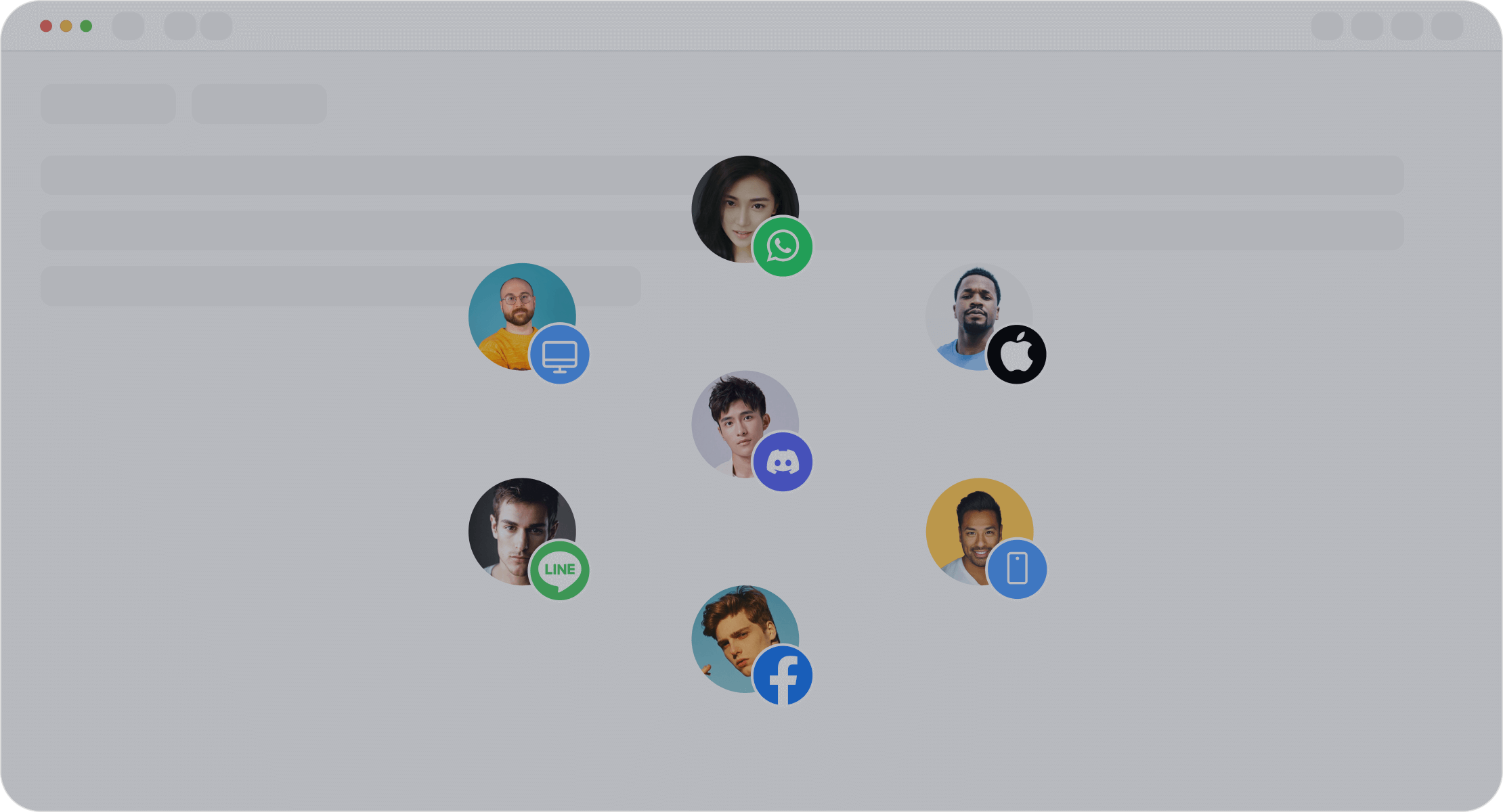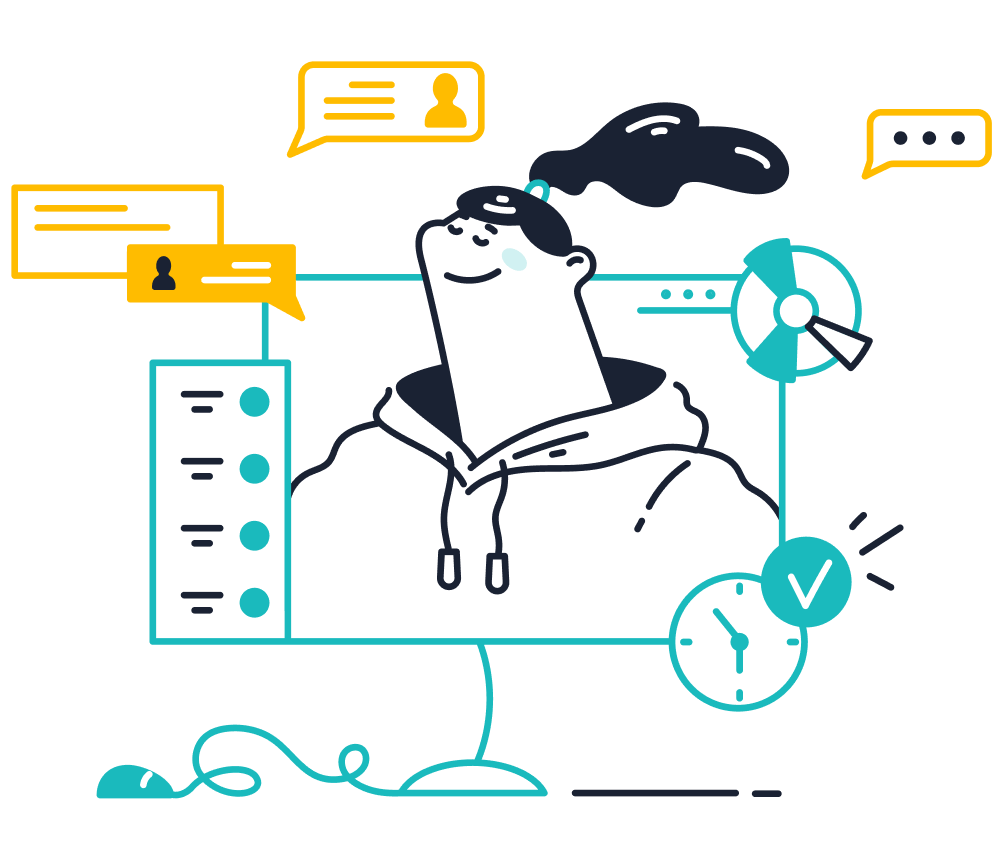How Natural Language Processing Shapes AI Today

Natural language processing (NLP) has become a driving force in AI, enabling machines to interpret and generate human text with remarkable accuracy. You can see its impact everywhere, from chatbots that resolve customer queries instantly to devices like Google Home that respond to your voice commands. The NLP market is growing rapidly, with projections of reaching $453.3 billion by 2032. Businesses now use NLP to automate tasks, analyze customer text for insights, and deliver personalized experiences. Tools like Sobot’s Live Chat leverage NLP to unify customer interactions, ensuring seamless communication across platforms.
Understanding Natural Language Processing (NLP)
What is NLP?
Definition and core principles of NLP
Natural language processing (NLP) allows computers to understand and interact with human language. It bridges the gap between human communication and machine interpretation. By analyzing text, NLP enables machines to process, interpret, and even generate language. Key techniques include text preprocessing, named entity recognition (NER), and sentiment analysis. For example, text preprocessing involves cleaning and organizing raw text data to make it usable for AI systems. Sentiment analysis helps businesses gauge customer emotions, such as satisfaction or frustration, from feedback. These principles form the foundation of NLP, making it essential for AI applications like chatbots and virtual assistants.
How NLP integrates with AI technologies

NLP works seamlessly with AI technologies to enhance their capabilities. Smart assistants like Alexa and Google Assistant use NLP to recognize your voice and respond to your queries. They rely on natural language generation to provide meaningful answers. In customer service, tools like Sobot’s Live Chat integrate NLP to unify conversations across platforms. This ensures efficient communication and helps businesses deliver personalized experiences. NLP also powers social media monitoring by filtering comments and identifying emotions through sentiment analysis. Its integration with AI transforms how machines interact with humans, making communication more intuitive.
Core Functions of NLP in AI
Language understanding and interpretation
NLP enables machines to understand the meaning behind text. This involves identifying the context, intent, and sentiment of the words. For instance, when you ask a chatbot about a product, NLP helps it interpret your query and provide accurate information. This function is vital for applications like customer support and virtual assistants.
Language generation and synthesis
NLP doesn’t just understand text; it also generates it. This includes creating responses, summaries, or even entire articles. For example, Sobot’s Live Chat uses NLP to craft personalized replies, enhancing customer interactions. This function ensures that AI systems can communicate effectively and naturally.
Machine translation and multilingual processing
NLP breaks language barriers by enabling real-time translation. Tools like Google Translate use NLP to convert text from one language to another. Sobot’s Live Chat also offers auto-translation, allowing businesses to communicate with global customers effortlessly. This capability makes NLP indispensable for multilingual applications.
Applications of NLP in AI-Powered Customer Service
Enhancing Customer Interactions with NLP
Role of chatbots and virtual assistants in customer support

Chatbots and virtual assistants have revolutionized customer service by providing instant responses to inquiries. These tools, powered by natural language processing (NLP), can interpret customer queries and deliver accurate answers. For example, in eCommerce, chatbots handle common questions like order tracking or return policies, ensuring quick resolutions. Sobot’s Live Chat exemplifies this by unifying customer interactions across platforms, enabling seamless communication. With NLP, these systems also adapt to customer preferences, offering personalized and contextual responses that enhance satisfaction.
Sentiment analysis for understanding customer feedback
Customer sentiment analysis plays a crucial role in understanding how customers feel about your brand. By analyzing text from reviews, surveys, or social media, NLP categorizes opinions as positive, negative, or neutral. This helps businesses identify areas for improvement and leverage positive feedback. For instance, a company can use sentiment analysis to detect dissatisfaction in product reviews and address issues promptly. Tools like Sobot’s Live Chat integrate sentiment analysis to gauge emotions during interactions, ensuring agents respond appropriately and improve customer experiences.
Automating Customer Service Tasks
Machine translation for global customer communication
Machine translation powered by NLP breaks language barriers, enabling businesses to communicate with customers worldwide. This is especially vital for global eCommerce and customer support. Sobot’s Live Chat offers auto-translation, allowing real-time, bi-directional communication in multiple languages. This ensures that customers receive support in their preferred language, enhancing accessibility and satisfaction. By automating translations, businesses save time and resources while expanding their reach.
Text summarization for efficient query resolution
Text summarization simplifies complex information, making it easier for agents to address customer queries. NLP-driven summarization extracts key points from lengthy text, such as support tickets or product manuals. This reduces the time agents spend reading and improves response times. For example, Sobot’s Live Chat uses text summarization to condense customer inquiries, enabling agents to focus on resolving issues efficiently. This automation enhances productivity and ensures faster resolutions.
Personalizing Customer Experiences
AI-driven recommendation systems

NLP enables AI-driven recommendation systems to analyze customer interactions and suggest relevant products or services. By understanding text from past purchases or preferences, these systems provide tailored suggestions. For instance, an online retailer can recommend items based on browsing history, increasing sales and customer satisfaction. Sobot’s Live Chat leverages NLP to deliver personalized recommendations during conversations, fostering loyalty and engagement.
Voice recognition and conversational AI in customer service
Voice recognition combined with conversational AI transforms how you interact with businesses. NLP processes spoken language, allowing systems to understand and respond naturally. This technology powers virtual assistants that handle inquiries through voice commands, offering hands-free convenience. In customer service, voice recognition enhances accessibility, especially for users with disabilities. Sobot’s Live Chat integrates conversational AI to provide seamless, voice-enabled support, ensuring a more intuitive experience for customers.
The Importance of Natural Language Processing in AI
Improving Human-Computer Interaction
Making communication with machines more intuitive
Natural language processing (NLP) transforms how you interact with machines by making communication more conversational and intuitive. It enables computers to understand and respond to human language, bridging the gap between human expression and machine understanding. For example:
- Voice assistants like Alexa and Siri use NLP to process your voice commands and provide hands-free convenience.
- Chatbots analyze the intent behind your queries to deliver contextually relevant responses.
This seamless integration allows you to communicate in your own words, making interactions feel natural and effortless.
Reducing barriers between customers and technology
NLP reduces the complexity of interacting with technology. By analyzing the meaning and intent behind text, it ensures that machines can adapt to your needs. For instance, Sobot’s Live Chat uses NLP to unify conversations across platforms, enabling you to interact with businesses without switching between apps. This accessibility fosters smoother communication and eliminates barriers, making technology more user-friendly.
Automating Repetitive Customer Service Tasks
Streamlining workflows in contact centers
NLP-powered tools streamline workflows by automating repetitive tasks in contact centers. For example, Sobot’s Live Chat uses text summarization to condense lengthy customer inquiries, allowing agents to focus on resolving issues faster. This automation reduces response times and improves operational efficiency, ensuring that your queries are addressed promptly.
Reducing manual effort in customer query handling
NLP minimizes manual effort by automating processes like ticket categorization and machine translation. Sobot’s Live Chat offers auto-translation, enabling real-time communication in multiple languages. This feature helps businesses handle global customer queries efficiently, saving time and resources while enhancing customer satisfaction.
Enabling Personalized Customer Support
Tailoring AI responses to individual customer needs
NLP enables AI-driven systems to analyze customer interactions and tailor responses to your specific needs. By examining text from chats, emails, or social media, it identifies your preferences and pain points. Sobot’s Live Chat leverages this capability to provide personalized recommendations, ensuring that your experience feels unique and relevant.
Enhancing customer satisfaction through customization
Personalized interactions lead to higher satisfaction. NLP allows businesses to customize responses based on your history and behavior. For instance, AI-driven solutions like Sobot’s Live Chat use sentiment analysis to gauge your emotions during conversations, ensuring that agents respond appropriately. This level of customization fosters trust and loyalty, enhancing your overall experience.
Challenges in Implementing NLP in AI
Addressing Bias in NLP Models
How biases in training data affect customer interactions
Bias in training data can significantly impact how NLP models interact with customers. When datasets reflect societal biases, the models may produce unfair or inaccurate results. For example, a chatbot trained on biased text might unintentionally favor certain demographics, leading to unequal treatment. This issue becomes critical in applications like hiring or loan approvals, where fairness is essential. You might notice that biased responses can damage trust and customer satisfaction. Addressing this requires careful curation of training data to ensure it represents diverse perspectives.
Efforts to create fair and unbiased AI systems
Developers are actively working to reduce bias in NLP models. Strategies include using diverse datasets, implementing ethical guidelines, and testing models for fairness. For instance, researchers train models with balanced text from various sources to minimize skewed outputs. Additionally, tools like Sobot’s Live Chat leverage these advancements to provide equitable customer interactions. By prioritizing fairness, businesses can build trust and improve user experiences.
Overcoming Language Diversity
Challenges in supporting less common languages
Supporting less common languages presents unique challenges. High-quality training data for these languages is often scarce, making it difficult for NLP models to perform effectively. Ambiguity in text, such as words with multiple meanings, further complicates the process. For example, a model might struggle to interpret context in languages with limited resources. This can hinder global communication and customer support efforts.
Developing multilingual NLP models for global customers
To address these challenges, developers create multilingual NLP models that handle diverse languages. Techniques like zero-shot learning allow models to perform well even with minimal data. For instance, multilingual BERT and GPT-3 excel at understanding mixed-language text, enabling seamless language translation. Sobot’s Live Chat integrates auto-translation to support global customers, ensuring effective communication across languages. These innovations make NLP more accessible and inclusive.
Managing Computational Demands
Resource-intensive nature of NLP algorithms
NLP algorithms often require significant computational resources, which can limit their scalability. Training large models involves processing vast amounts of text, consuming time and energy. This can pose challenges for businesses with limited infrastructure. For example, smaller companies may struggle to implement advanced NLP solutions due to high costs.
Balancing accuracy and efficiency in customer service applications
Balancing accuracy and efficiency is crucial for NLP applications in customer service. Developers optimize models to deliver precise results without overloading systems. Cloud-based services and smaller-scale models help reduce computational demands. Sobot’s Live Chat exemplifies this balance by offering accurate language translation and text summarization while maintaining efficiency. These solutions ensure that businesses can provide high-quality support without compromising performance.
Industries Transformed by NLP-Driven AI
Revolutionizing Customer Service with Sobot Live Chat
Enhancing customer interactions with omnichannel support

NLP-driven AI has transformed customer service by enabling seamless communication across multiple platforms. Tools like Sobot Live Chat unify interactions from websites, apps, and social media channels, ensuring no message goes unanswered. For example, when a customer reaches out via WhatsApp, the system integrates the conversation into a unified workspace. This omnichannel approach simplifies communication and ensures consistent service quality. Additionally, NLP-powered chatbots provide instant responses, reducing wait times and enhancing satisfaction. By analyzing text, these systems understand customer intent and deliver accurate, personalized solutions. Businesses using Sobot Live Chat have reported a 38% increase in conversion rates, showcasing the effectiveness of omnichannel support.
Improving agent efficiency with AI-powered tools

AI-powered tools equipped with NLP streamline repetitive tasks, allowing agents to focus on complex issues. Sobot Live Chat uses text summarization to condense lengthy inquiries, saving time and improving resolution speed. Sentiment analysis further enhances efficiency by gauging customer emotions, enabling agents to respond appropriately. For instance, if a customer expresses frustration, the system prioritizes the query for immediate attention. These tools not only reduce agent workload but also improve service quality. With features like intelligent assignment and built-in analytics, Sobot Live Chat empowers agents to work smarter, not harder.
Transforming Healthcare with NLP
Analyzing medical records for better diagnostics
NLP plays a critical role in healthcare by analyzing patient records to improve diagnostics. By processing large volumes of text, NLP models identify patterns and predict potential health risks. For example, predictive analytics can flag high-risk patients based on their medical history. This technology reduces diagnostic errors and enhances patient outcomes. Additionally, NLP automates clinical documentation, allowing healthcare providers to focus more on patient care. Hospitals using NLP tools have reported increased efficiency and accuracy in medical record management.
Enhancing patient communication with AI
Complex medical terminology often creates a communication gap between patients and providers. NLP bridges this gap by simplifying text and making it easier to understand. For instance, AI-powered chatbots can explain treatment plans in layman’s terms, improving patient comprehension. Sobot’s multilingual capabilities, such as auto-translation, ensure effective communication with patients from diverse linguistic backgrounds. This fosters trust and enhances the overall patient experience.
Advancing Financial Services
Fraud detection through sentiment analysis
NLP enhances fraud detection by analyzing linguistic cues in customer interactions. Sentiment analysis identifies suspicious behavior, such as urgency or inconsistencies in text, which may indicate fraud. A financial institution recently used NLP to prevent a phishing scam, safeguarding millions of dollars. Named Entity Recognition (NER) further aids in identifying suspicious actors and compromised institutions. These tools provide a proactive approach to fraud prevention, ensuring financial security.
Automating customer support in banking
NLP automates customer support in banking by categorizing and prioritizing queries. AI-powered chatbots handle routine tasks like balance inquiries, freeing agents to address complex issues. Sobot Live Chat’s auto-translation feature enables banks to serve global customers efficiently. By streamlining processes, NLP reduces response times and enhances customer satisfaction. This automation not only improves service quality but also lowers operational costs.
Natural language processing (nlp) continues to redefine how you interact with technology and industries. Its ability to process and generate text intuitively has made it a cornerstone of ai advancements. Tools like Sobot’s Live Chat showcase how nlp enhances customer interactions, automates tasks, and personalizes experiences. Future trends, such as large language models and conversational ai, promise even more natural and efficient communication. With the nlp market projected to reach $453.3 billion by 2032, its potential to transform industries and improve accessibility remains immense.
As nlp evolves, it will empower you to interact with technology in your own words, fostering innovation and inclusivity across sectors.
FAQ
What is the role of NLP in generative AI?
NLP plays a crucial role in generative AI by enabling machines to understand and generate human-like text. It powers applications like chatbots, content creation, and language translation. For example, Sobot’s Live Chat uses NLP to craft personalized responses, ensuring seamless communication across platforms.
How do NLP techniques in generative AI improve text generation?
NLP techniques in generative AI, such as tokenization and attention mechanisms, enhance text generation by analyzing context and structure. These techniques allow generative AI models to produce coherent and contextually relevant content. Businesses use these advancements to automate tasks like drafting emails or summarizing documents.
What are some common NLP applications in generative AI?
NLP applications in generative AI include chatbots, virtual assistants, and content generation tools. For instance, conversational AI systems use NLP to engage users in natural dialogues. Sobot’s Live Chat leverages these applications to provide real-time, multilingual support, improving customer satisfaction.
How does NLP in generative AI handle multiple languages?
NLP in generative AI uses multilingual models to process and generate text in various languages. Techniques like auto-translation enable real-time communication across linguistic barriers. Sobot’s Live Chat integrates these features, allowing businesses to support global customers effortlessly.
Why is NLP important for conversational AI?
NLP is essential for conversational AI because it enables systems to understand and respond naturally to user inputs. By analyzing intent and context, NLP ensures accurate and meaningful interactions. Sobot’s Live Chat exemplifies this by delivering personalized and intuitive customer support.
See Also
Comprehensive Overview of AI Software for Call Centers
Best 10 AI Solutions for Enterprise Contact Centers
Leading 10 Speech Analytics Tools for Call Centers This Year